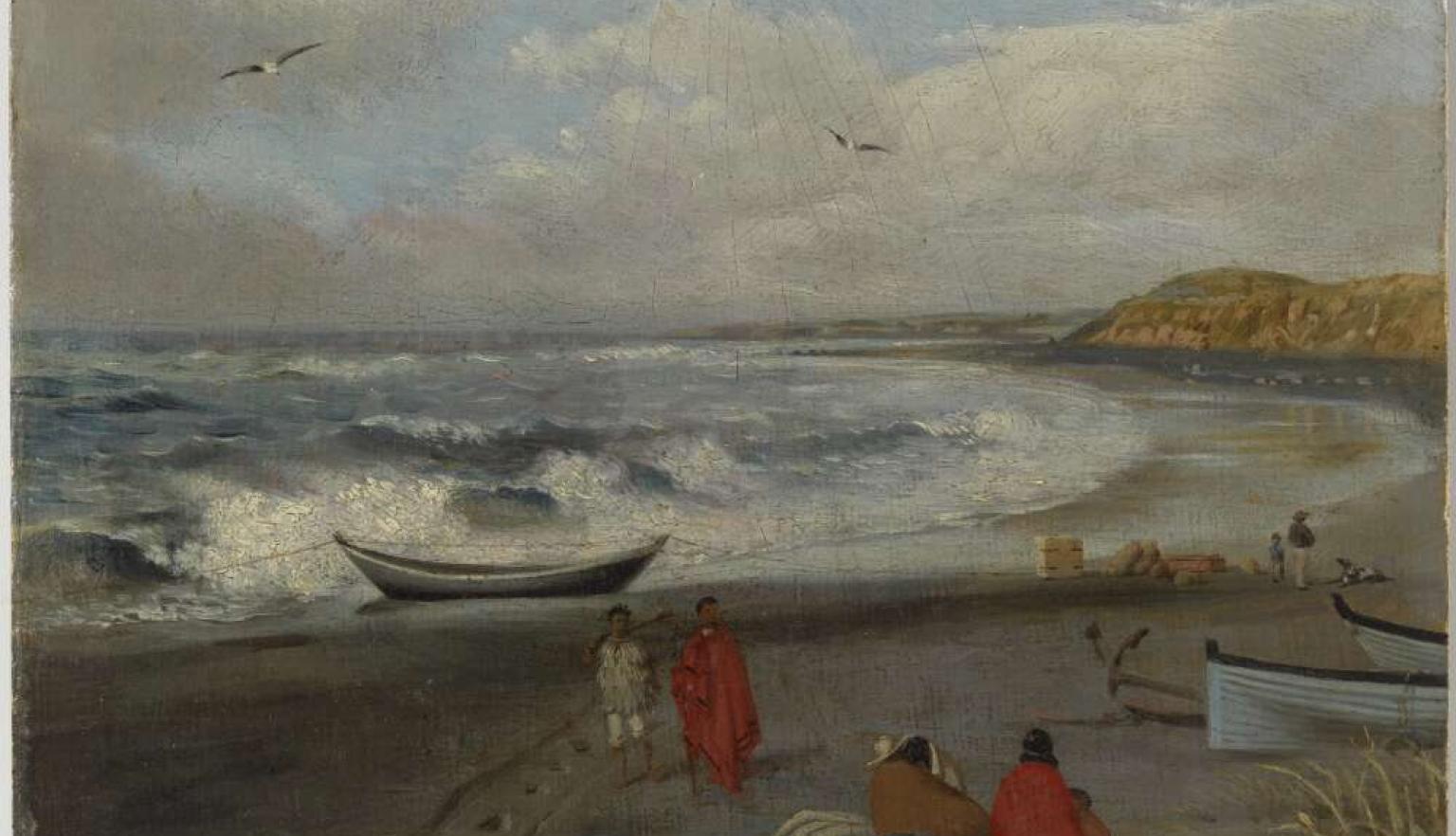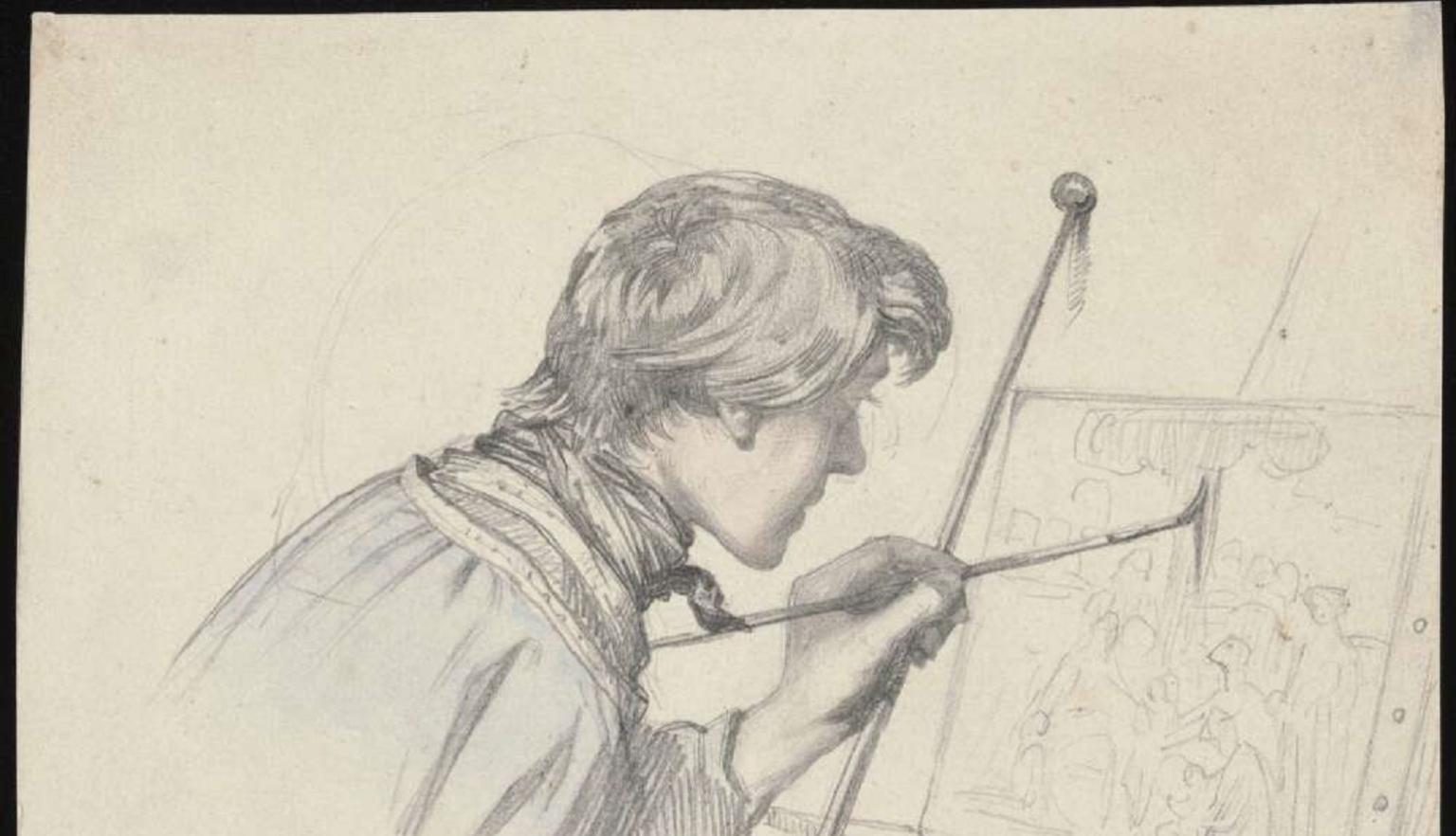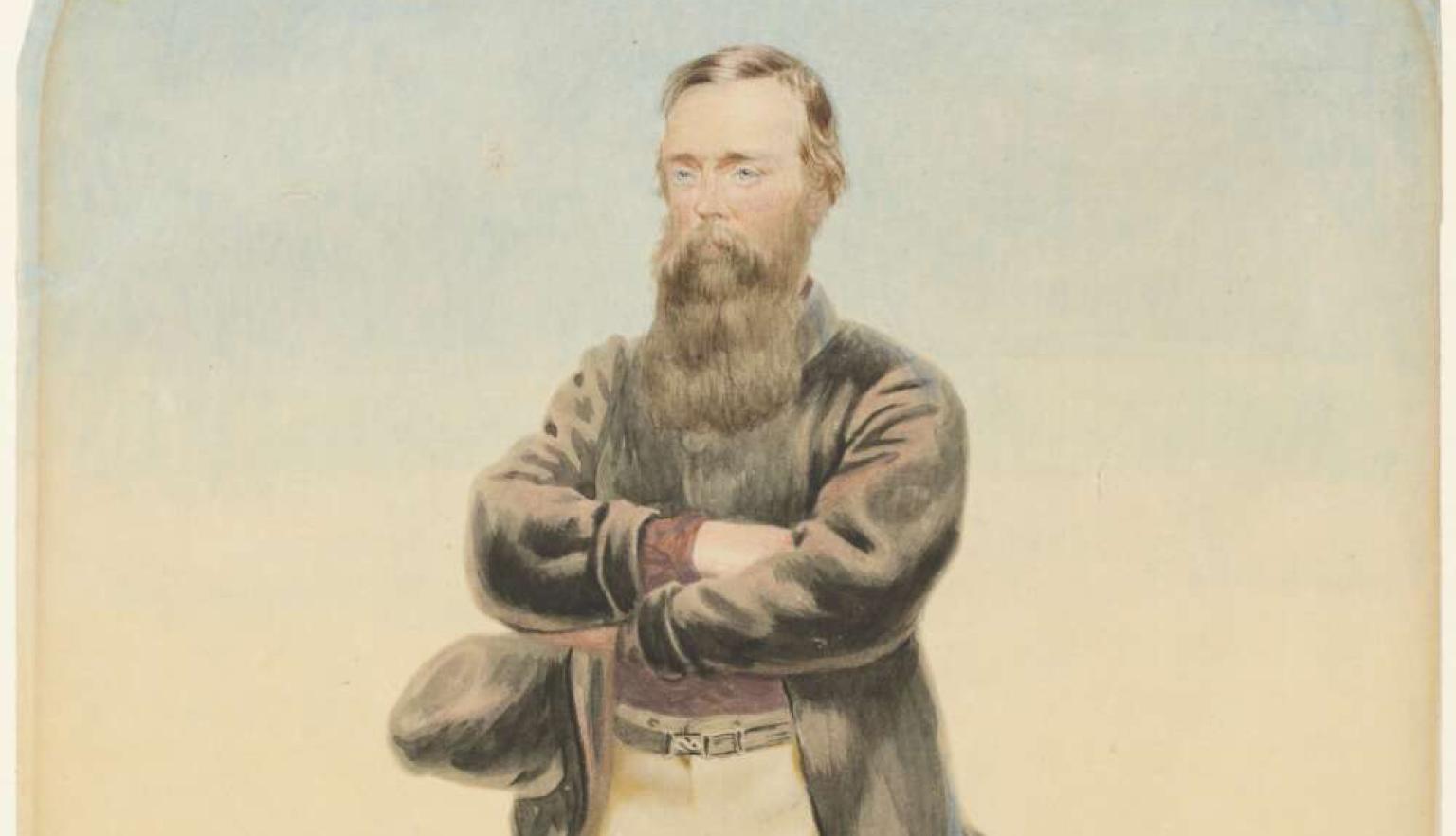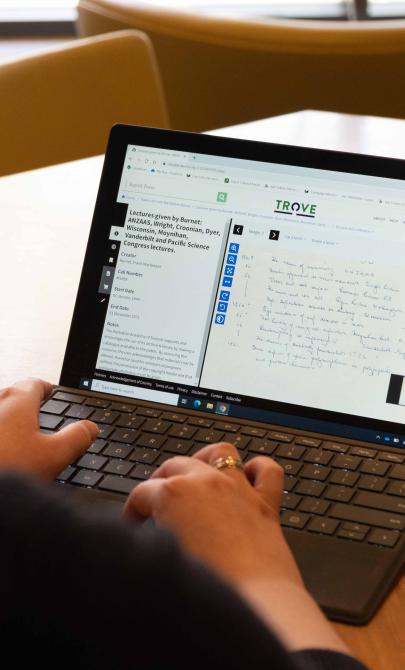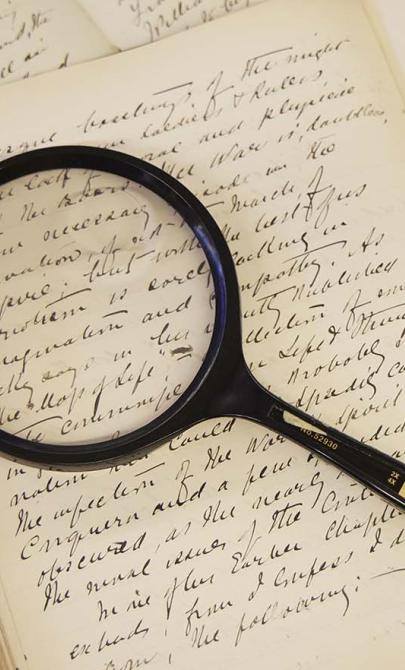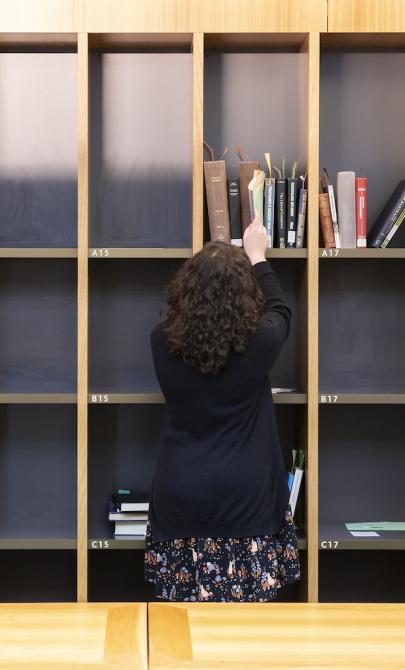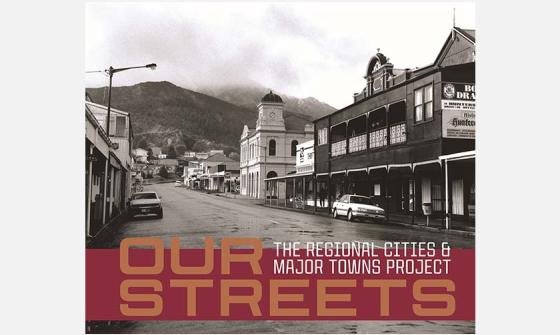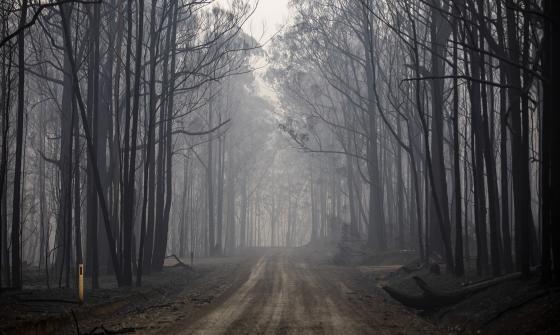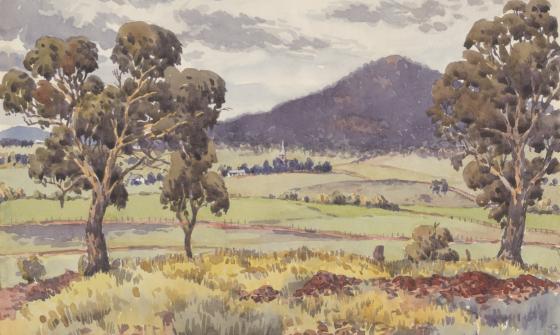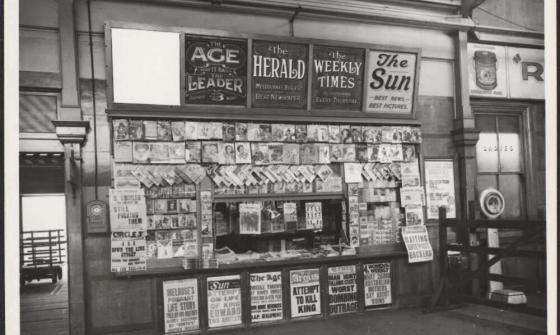Strutt Collection
Key items in the collection
Highlights from this collection demonstrate its historical significance and variety.
We hold approximately 280 works by Strutt, spanning 1837 to 1900, created in France, Australia, New Zealand, Africa, and England. The collection includes:
Mediums
Five oil paintings, 12 watercolours, and numerous works in pen and wash, charcoal and wash, pencil and wash, and other drawing styles.
Early works
The earliest work by Strutt in the collection is a pencil and wash drawing entitled Monsieur Duterque, my Old & Beloved Tutor at Boulogne (1837).
Australian subjects (135 works)
They include paintings and drawings of:
- Indigenous peoples, bullock drivers, bushrangers, policemen, soldiers, swagmen, and settlers.
- The Burke and Wills expedition, the missionary ship John Williams, and landscapes such as Richmond police barracks, Woodend, and bush scenes.
- Flora and fauna, including kangaroos, birds, and native plants.
- Bushfire sketches, including preparatory works for Black Thursday, depicting the 1851 Victorian bushfires.
Among the portraits are:
- an oil portrait of John Pascoe Fawkner (1856)
- a wash drawing of the Reverend Thomas Binney
- pencil and crayon drawings of Sir Edward Macarthur and Lady Macarthur (1858)
- a watercolour portrait of Robert O’Hara Burke (1860)
‘The Little Wanderers’ (32 works)
Inspired by the disappearance and rescue of the Duff children in Victoria in 1864, these include:
- Two watercolours based on an oil painting exhibited at the Royal Academy (1865).
- Nine pencil and wash illustrations and eight-chapter headpieces for Strutt’s unpublished story, Cooey, or the Trackers of Glenferry.
New Zealand subjects
- Two oil paintings, Beach at Taranaki, New Zealand, with Maoris and Boats and Hare Pomare and his Wife Hariate.
- Pencil sketches of Māori people, a tracing of Mount Egmont and a wash drawing of Strutt at Mangaire, Taranaki (1856).
French works
French works include:
- a pencil and wash drawing of an artist at the Atelier Drolling
- a sketchbook containing drawings of fifteenth-century costumes copied from a manuscript in the Bibliothèque Nationale
- a sketch of Raphael’s Massacre of the Innocents
- a pencil and wash drawing of the River Seine at Bray-sur-Seine
Later works
Among the works dating from Strutt’s later years are several sketches of lions and horses, pencil and wash drawings of Nubians and Laplanders, and sketches of stocks in English towns.
We hold 2 typescripts by Strutt:
- Cooey, or the Trackers of Glenferry: A True Australian Story (1901) recounts the disappearance of three children from Glenferry Station in Victoria. After nine days in the bush, they were found by Indigenous trackers. The story is based on the real events surrounding the disappearance and rescue of the Duff children in 1864.
- Off for Australia details Strutt’s 1850 voyage to Australia, his impressions of Melbourne, the Victorian separation celebrations, the Ballarat goldfields, bushrangers, farming in New Zealand, encounters with the Maori, and the Burke and Wills expedition.
A microfilm copy is held of the fuller autobiography entitled ‘The Life and Adventures of the Painter of Peace’. The original is in the Mitchell Library in Sydney. The Library also holds photocopies of some papers of George Mackaness comprising notes by Strutt and letters from Margaret Strutt Davies, which are also in the Mitchell Library (ML DOC 2008).
About William Strutt
Early life and education
William Strutt (1825–1915) was born in Teignmouth, Devon, into a family of artists. After a brief period in Boulogne, France, he returned there in 1838 to study art. He trained in Paris under Michel-Martin Drölling and at the École des Beaux-Arts, spending considerable time drawing inspiration from the collections at the Louvre. Strutt received numerous commissions for book illustrations in both France and England before emigrating to Australia in 1850 due to poor health.
Career in Australia and New Zealand
Upon arriving in Melbourne, Strutt worked for the Ham brothers, producing engravings for the Illustrated Australian Magazine. His versatile artistic skills were evident in his work designing and engraving postage stamps, posters, maps, and seals. He also painted oil portraits of prominent Victorians, including John Pascoe Fawkner, and created miniature watercolour portraits of Aboriginal people, police, and bushrangers.
In 1856, Strutt and his family briefly relocated to New Plymouth, New Zealand, before returning to Melbourne in 1857. During this period, he collaborated with other notable artists, such as Eugene von Guerard, Ludwig Becker, Nicholas Chevalier, and James Smith, to revive the Victorian Society of Fine Arts. His final works in Australia included sketches documenting the preparations for the Burke and Wills expedition.
Return to England
Strutt returned to England in 1862, where he continued to develop his career. Over the next three decades, he frequently exhibited his paintings at the Royal Academy and became a member of the Royal Society of British Artists.
Legacy
Strutt's work captures the richness and diversity of colonial life in Australia and New Zealand. His portraits and engravings provide valuable historical insights into the people, landscapes, and events of the mid-19th century.
Background to the collection
Our first acquisition of a Strutt painting was in 1915, with the purchase of a portrait of John Pascoe Fawkner from E. McMichael in Adelaide.
In 1964, the Library purchased 75 works by Strutt from his granddaughter, Margaret Strutt Davies, in London. The following year, it acquired 46 works from the London firm David Black.
In 1966, the typescript Cooey, or the Trackers of Glenferry and accompanying drawings were purchased from Sydney bookseller E.J. Hearn.
The largest collection of Strutt’s works—122 paintings and drawings, along with the typescript autobiography—was acquired in 1959 as part of the Nan Kivell Collection.
The paintings, drawings and prints of Strutt are held in the Pictures Collection. They have been catalogued individually and the majority have been digitised. The 2 typescripts by Strutt are held in the Manuscripts Collection.
Two of the oil paintings by Strutt in the Nan Kivell Collection, Summer Effect, Evening, Melbourne and Summer Sky, Melbourne (1862) are on long-term loan to the National Gallery of Australia.
Paintings and other artworks by Strutt are held in many galleries and libraries including the National Gallery of Australia, the Mitchell Library, the Art Gallery of New South Wales, the La Trobe Library and the National Gallery of Victoria.
This guide was prepared using these references:
- Judy Cannon, The Artist who Painted Words, National Library of Australia News, vol. 14 (11), August 2004, pp. 3–6.
- Heather Curnow, The Life and Art of William Strutt 1825–1915, Alister Taylor, Martinborough,1980.
- Heather Curnow, William Strutt, Joan Kerr (editor), The Dictionary of Australian Artists, Oxford University Press, Melbourne, 1992, pp. 767–9.
- Heather Curnow, William Strutt, Australian Gallery Directors Council, Sydney, 1980.
- Marjorie J Tipping, Strutt, William (1825–1915), Australian Dictionary of Biography online
